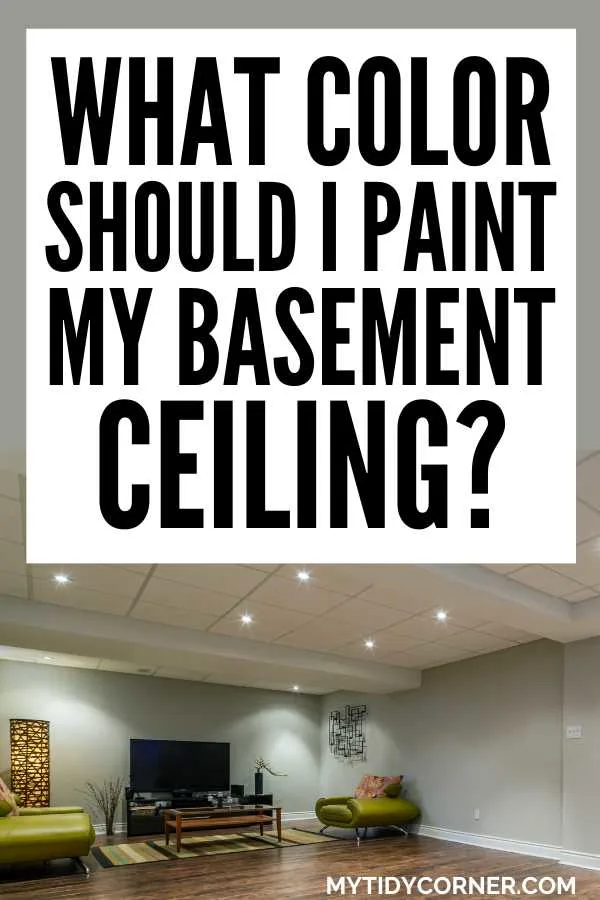Are you wondering, what color to paint a basement ceiling? To help you make the right choice, here are the best paint colors for a basement ceiling, plus tips for choosing wisely.
With homes getting smaller, many of us are turning to the basement as room for expansion. My sister’s remodel created a gorgeous family room where they watch movies, play games, and catch up.
Whether you’re creating a playroom, laundry room, home office, or extra bedroom, you need to make some decisions about paint colors. What are the best colors to paint a basement ceiling?
The best colors to paint a basement ceiling in a poorly lit, cramped space are white, off-white, yellow, blue, or gray. Trending earthy greens, reds, and greige are warm and cozy. Dramatic black, charcoal or dark blue is best for an intimate movie room or bar.
Before painting the basement, you must decide what you will use it for, how much natural light it gets, and how large the space is. These decisions will help fuel your creative juices as you select a color palette to paint walls, cupboards, and the ceiling.

The Best Light Colors for Basement Ceilings (for Windowless Basements)
Most people paint their basements in lighter colors for excellent reasons. Basements are often small, dark spaces. Lighter colors:
- Make small spaces feel more airy and open, particularly if the basement is a single room.
- Reflect both natural and artificial light, making the basement brighter.
- Work well with other colors and textures.
- Create a relaxed, tranquil atmosphere.
(Here are some of the best color combinations for walls and ceiling.)
#1. White
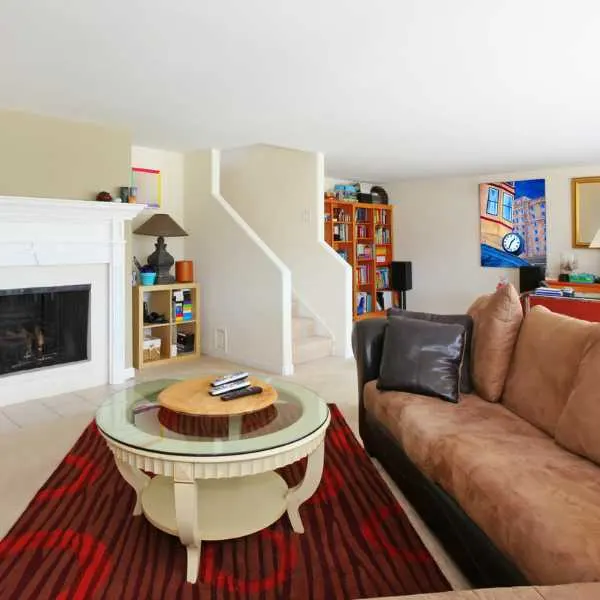
Most basements are painted white, including the ceiling. White walls and ceilings make a space ultra-bright, especially if they are only lit by artificial light. While icy whites look stark under natural light, creamy whites can look yellow and dingy, so go for the purest white you can find if the basement is dark.
White is an excellent choice for disguising an exposed basement ceiling with beams, joists, wires, and pipes. Use at least two coats for good coverage. This is an old photographer’s decorating trick – the utilitarian hardware becomes almost sculptural under a white layer.
A white ceiling looks crisp and creates the illusion of a higher ceiling, even if you paint the walls a different color. The contrast makes the white even more vivid and fresh and is ideal for a family room or kids’ playroom.
Consider painting the ceiling white if you want to paint the walls a dark, moody shade. You can enjoy the coziness without the space closing in on you, especially if the room has a low ceiling and is dimly lit.
You can also create contrast through the furnishings and accessories to highlight the clean white ceiling.
The best paint choices for pure white are:
- High Reflective White by Sherwin Williams
- Ceiling Bright White by Sherwin-Williams
- Decorator’s White by Benjamin Moore
- White Cloud by Benjamin Moore
#2. Off White
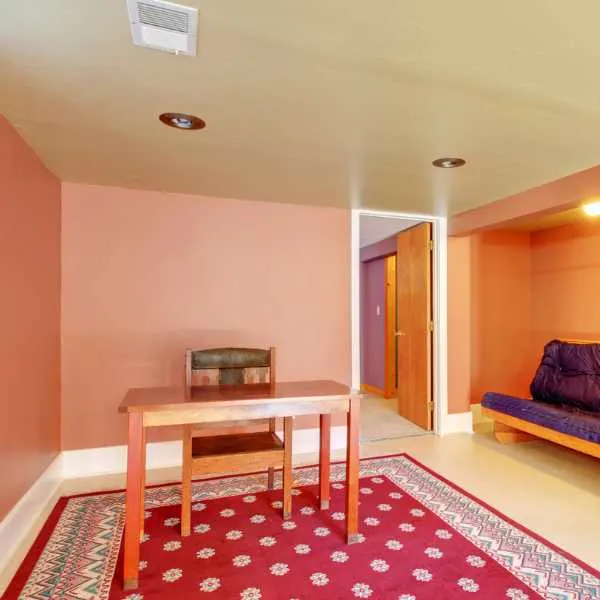
If white is too sterile for you, consider one of the off-white shades: ivory, cream, or beige. These colors have warm undertones and add a softness that stark white doesn’t.
Off white is an attractive color, making a room comfortable and appealing by mimicking the yellow tones of natural sunlight. This color works very well to enhance any natural light the room receives, so select off-white for a home kitchen, family room, craft room, or bedroom.
Beige is making a comeback among the earthy tones that are trending. Consider a beige ceiling if you have exposed brickwork, leather accents, and wooden floors.
Off-white works well with contrasting walls, especially an earthy color palette with red, orange, brown, or yellow tones. The reflected color makes the ceiling glow with warmth.
These are my recommendations for off-white ceiling colors:
- Barely Beige by Benjamin Moore
- Manchester Tan by Benjamin Moore
- Diverse Beige by Sherwin Williams
- Greek Villa by Sherwin Williams
- Cozy Cream by Glidden
#3. Yellow
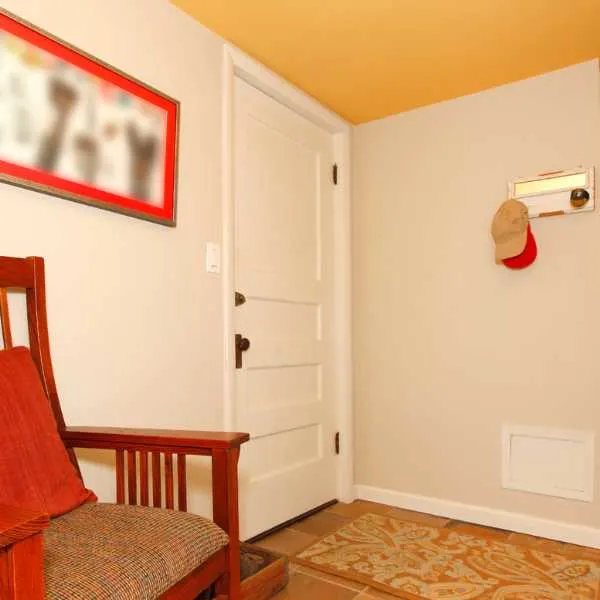
Yellow is the champion of small, dark spaces, magically making them into sunny, appealing rooms. Painting an entire basement yellow is a great idea if there isn’t much natural light.
Yellow will also reflect and enhance any light the room does enjoy. Choose yellow for playrooms, games rooms, bedrooms, and living rooms.
Remember that no rule says the ceiling and walls must be the same color. It may seem unusual, but consider painting your ceiling yellow, even if you keep the walls clean and white. The yellow and white pop against each other, creating the feeling of a sun-filled sky.
These are the yellows I turn to again and again:
- Morning Sunshine by Benjamin Moore
- Banana Yellow by Benjamin Moore
- Babouche by Farrow and Ball
- Wild Wonder by Dulux
- Icy Lemonade by Sherwin Williams
#4. Blue
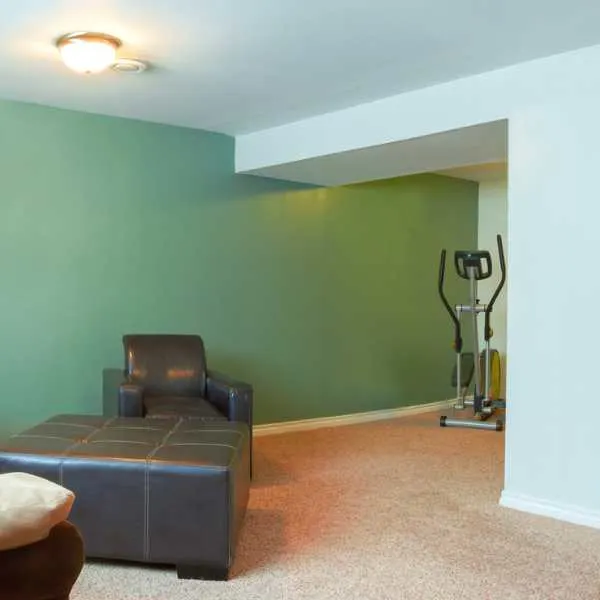
If yellow can bring the sun into a drab basement, blue brings in the bright tranquillity of a morning sky. Blue has connotations of water, air, and clouds, adding a natural feel to a room and making it ideal for basement retreats and she-sheds.
Stick to clear, soft blues to open up a smaller space, painting the ceiling one shade lighter than the walls.
Consider painting the ceiling blue even if the walls are white or a darker shade – you’ll enjoy the charming effect of lying in bed or on the couch looking up at the sky. This is an excellent way of opening up a cramped, low-ceiling room.
I love these blue paints:
- Watery by Sherwin Williams
- Hague Blue by Farrow & Ball
- Skylight by Farrow & Ball
- Watercolor Blue by Benjamin Moore
- Light Blue by Benjamin Moore
#5. Gray
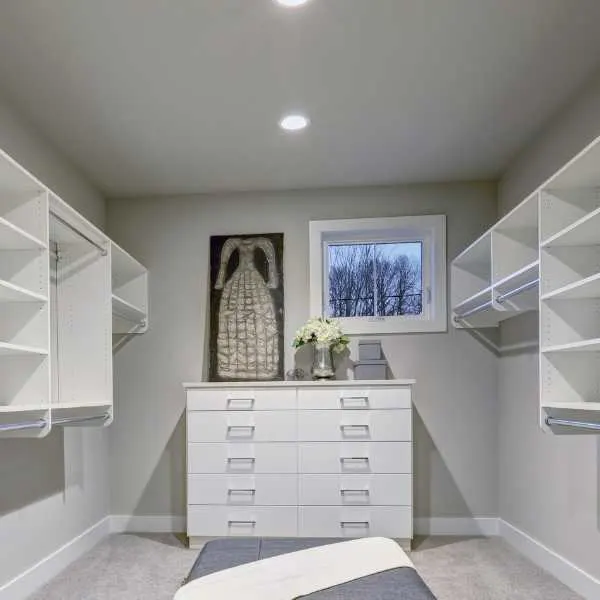
Gray remains a favored neutral, which works extremely well in basements. If you usually go for a stark white or dull off-white, consider gray: a more interesting shade that still reflects light, creating brightness and a sense of space.
Gray will also disguise flaws on a ceiling better than white, but you will still need at least two coats.
This varied color is soothing, particularly blue-grays, and is timeless, working with many other colors and home aesthetics.
It’s the ideal choice for crisp, clean spaces and is equally at home in masculine or feminine rooms. Gray is equally at home in a laundry room as a man cave.
Select one of these beautiful soft grays:
- Wedding Band by Magnolia Home
- Mindful Gray by Sherwin Williams
- Purbeck Stone by Farrow & Ball
- Iced Cube Silver by Benjamin Moore
- Gentle Gray by Benjamin Moore
Best Earthy Colors for Basement Ceilings (for Warm and Cozy Effect)
Although lighter colors are practical for window-less basements, the gorgeous earthy tones that we’re seeing everywhere are also an excellent idea.
These lush, natural colors bring warmth into a basement, making it welcoming and cozy. Choose earth shades to make your basement cozy yet chic, especially if you use a single shade for walls and ceiling.
#6. Olive Green
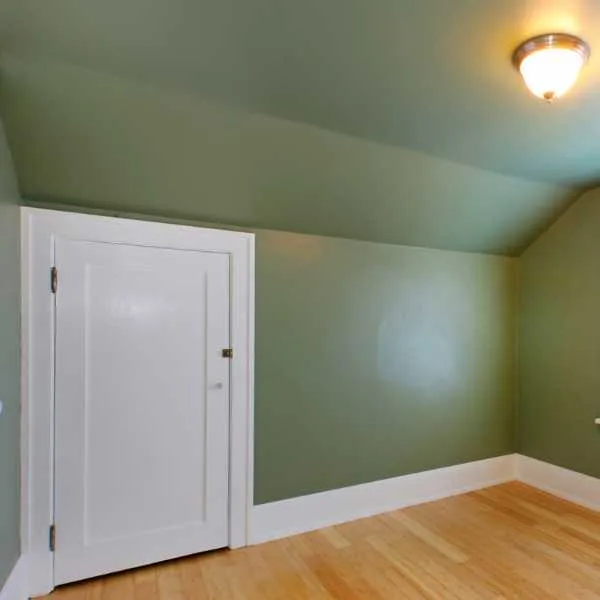
Deeper shades of green like olive, moss, forest, and pine are glorious for basements with natural light, creating a clearing within a leafy woodland. Combine with natural textures like wood and wicker, and contrast with fresh cream or white.
An earthy green ceiling contrasts with a plain white basement. It adds a tree-like header to an otherwise featureless space. Houseplants add to the natural effect.
Try one of these verdant shades:
- Studio Green by Farrow & Ball
- Calke Green by Farrow & Ball
- Jungle by Pratt & Lambert
- Kelly Green by Benjamin Moore
- Secret Garden by Sherwin Williams
#7. Greige
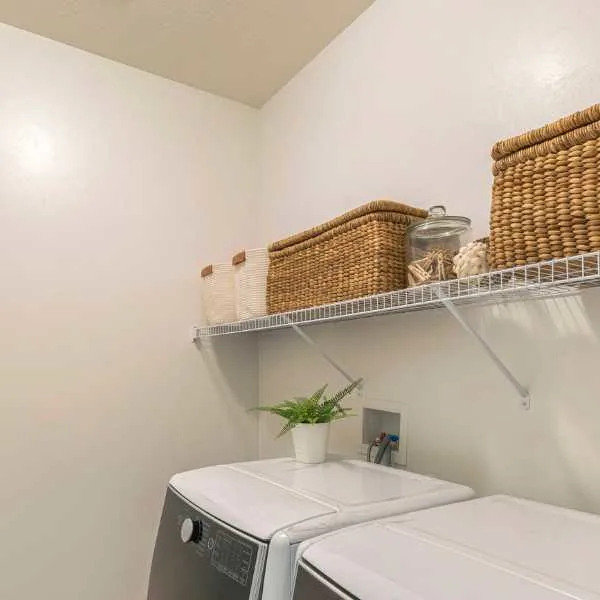
Gray’s popular cousin, greige, merges the coolness of gray with the warmth of beige, creating the ideal neutral.
This peaceful shade is perfect for an all-over paint, setting the tone for relaxation in a basement bar, lounge, or family room. Greige is cozier than misty gray but not so dark as to be oppressive.
Smoky greige pairs well with other neutrals and can cover flaws in a ceiling more effectively than white.
I’d stick to the clay tones of lighter greige, like these:
- Revere Pewter by Benjamin Moore
- Intellectual Gray by Sherwin Williams
- Herbal Wash by Sherwin Williams
- Greige by Clare
- Tranquil Gray by Behr
#8. Red
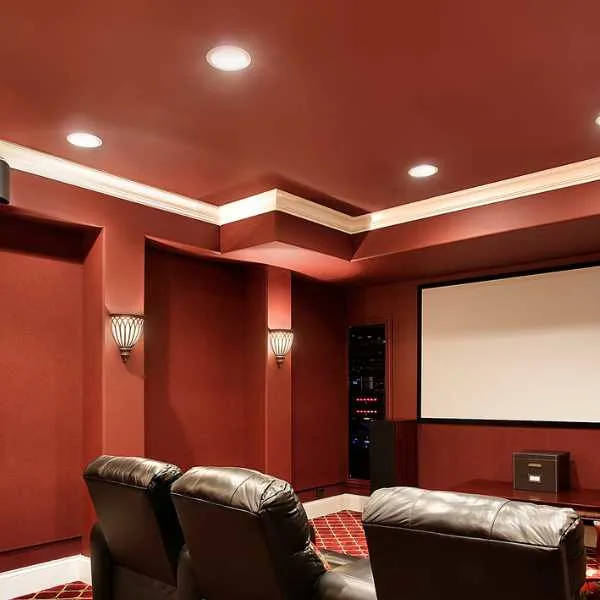
Earthy reds are perfect for basements, especially if you plan to use the space for entertainment and family time. Red is warm and inviting, creating a cocoon for snuggling and lazing together.
There are beautiful natural reds available at the moment:
- Red Earth by Farrow & Ball
- Positive Red by Sherwin Williams
- Rojo Dust by Sherwin Williams
- Glazed Pot by Behr
- Redend Point by Benjamin Moore
Best Dark Colors for Basement Ceilings (for Movie Room or Bar)
While most interior designers will argue for lighter colors in smaller spaces with very little natural light, there is an argument for darker colors in the basement.
If you’re feeling bold, go for a dark shade for walls and ceiling:
- To create an intimate ambiance
- For a dramatic effect
- For home move rooms
- For a man-cave or home bar.
#9. Black
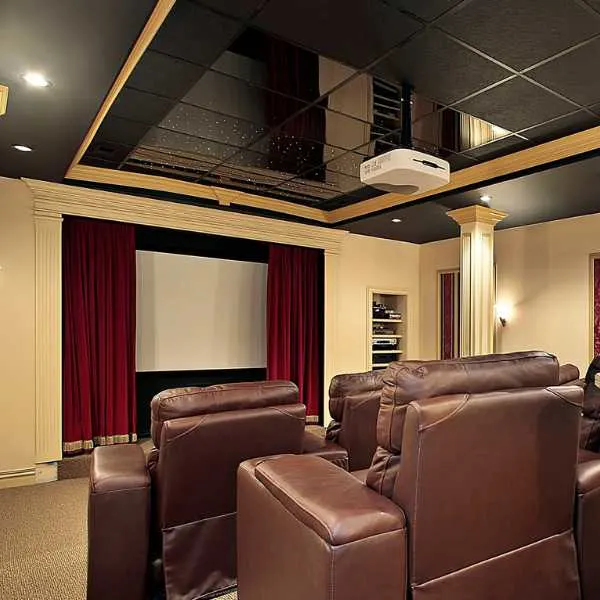
For a full-on cavern experience, paint the basement a rich, dark black. This is a good choice if your basement is primarily used as a private cinema or movie room at night. Ensure adequate electrical lighting so that moody doesn’t turn into horror movie.
If all-black is too daring, try painting the ceiling black for an intimate effect. This step has an added advantage: black paint covers exposed wires, pipes, and beams effectively, creating an industrial effect without much effort. The only proviso with a black ceiling is that you’ll see dust easily, so keep it clean and cobweb-free.
A black ceiling with lighter walls also blurs the room’s edges, making the ceiling seem endless, like a night sky.
These are perfect inky shades for ceilings:
- Tricorn Black by Sherwin Williams
- Jet Black by Benjamin Moore
- Black Beauty by Benjamin Moore
- Dark Kettle Black by Valspar
- Downpipe by Farrow & Ball
#10. Charcoal
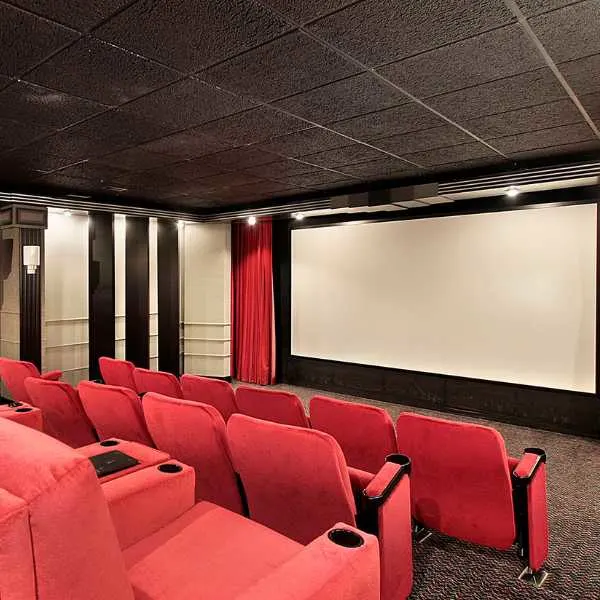
Black can be a little overwhelming, so dial it back with charcoal – this dark gray shade has more texture and interest than pure black but has the same cocooning effect. It’s sleek and modern if you create a bar downstairs and dark enough to have a move-theater vibe.
Like black, use charcoal for a ceiling that tops off lighter walls if you want an enclosed space without the intensity.
These charcoals range from definitely gray to almost black:
- Noir by Valspar
- Wrought Iron by Benjamin Moore
- Iron Ore by Sherwin Williams
- Peppercorn by Sherwin Williams
- Limousine Leather by Behr
#11. Midnight Blue
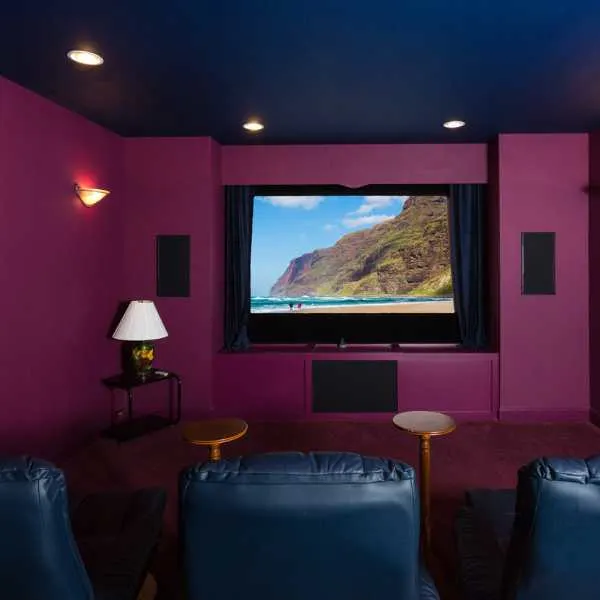
Dark, saturated blue is a perfect color for a basement, both for wrapping the walls and ceiling in the night sky. As with other dark shades, it’s best to have lots of artificial lighting and plan to use the space for movies, a bar, or a man cave.
Blue is moodier than black and gray, adding elegance and sophistication to the sense of space and possibility.
I love these dark blues:
- Old Navy by Benjamin Moore
- Gentleman’s Gray by Benjamin Moore
- Scotch Blue by Farrow & Ball
- Black Sea by Porter’s Paints
- Waterloo by Sherwin Williams
What Color Should I Paint My Basement Ceiling? Final Thoughts
Interior wisdom argues for lighter-colored ceilings in dimly lit, cramped, and low ceiling spaces. Choose white or a light shade if you want a basement to look bigger and lighter. However, darker colors are warmer and more inviting, while really dark shades create drama and a more intimate ambiance.
Which is your favorite paint color for basement ceilings? Leave your comment below.
